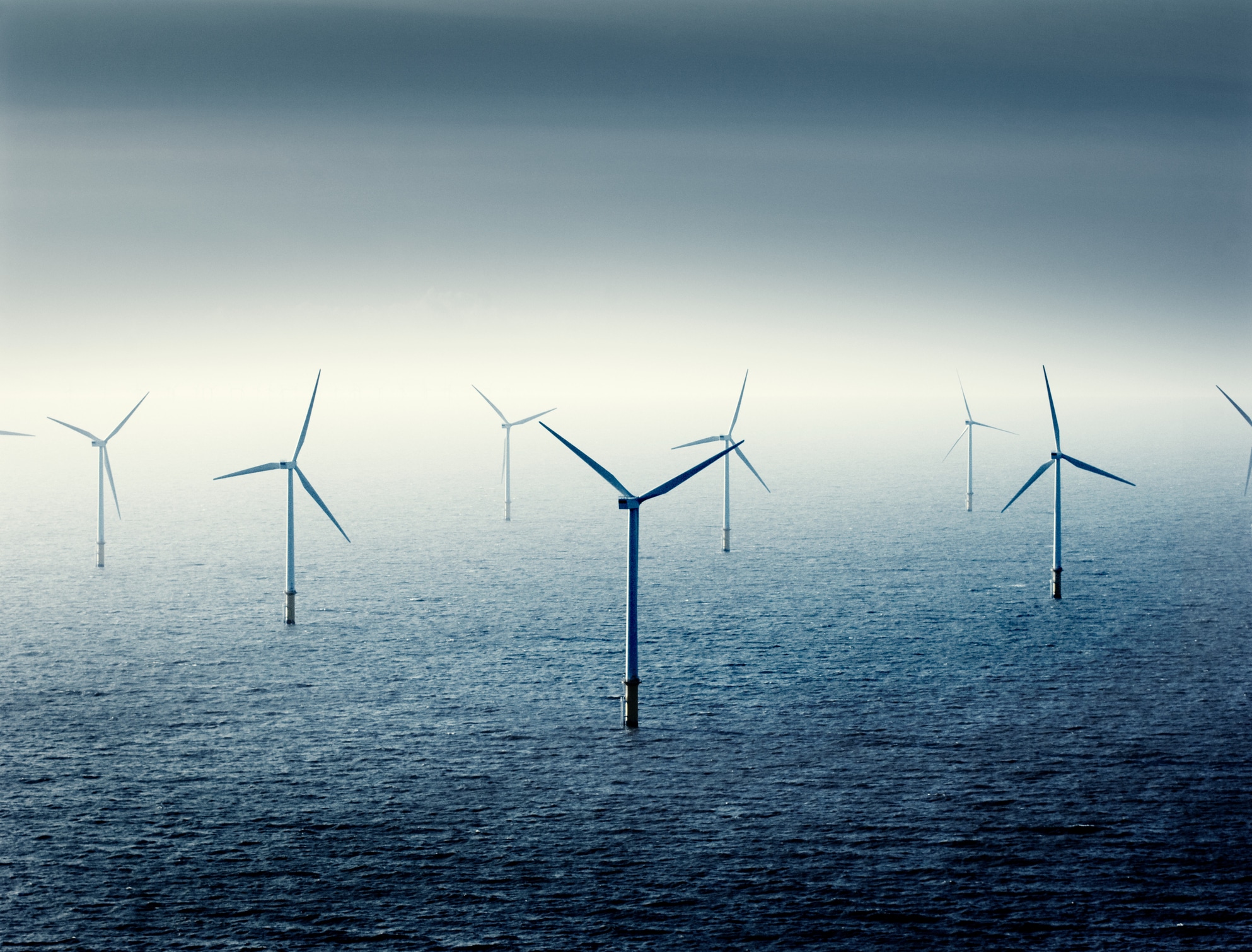Undersea unexploded ordnance (UXO) are a risk to windfarm construction in the UK’s North Sea, with a historical twist that makes detecting them more complex than it should be. Seequent’s Strategic Account Executive Matt Grove explains how geophysics helps this branch of the clean energy sector build more confidently and efficiently.
What we thought were tightly defined areas of risk have turned out to be entire corridors of risk, with ordnance ranging from high explosive to chemical.
Windfarms are an important source of clean energy, and around the UK, the North Sea is an ideal place to put them. Lots of wind so lots of energy, and not an eyesore for anyone. But they face a problem in that these huge turbines need to be built in locations where there’s a risk of unexploded munitions right below them. What we try to do is mitigate that risk.
Why should that be the case? Well post World War ll there was a real urgency to dispose of unused ordnance. The plan was to drop them far out into the North Sea, well away from shipping lanes or infrastructure. However, the commercial vehicles commissioned to dump them in these carefully selected and marked off polygons on the map, were paid by the load. As soon as they left port and were out of sight, many just ditched the munitions over the side and came back to load up again.
Consequently, there is unexploded ordnance peppered all over the place, and often in areas closer to shore where windfarms like to be.
Add to that the complication of the North Sea being a very mobile environment. Sand waves are moving and migrating on a daily basis, shifting these munitions with them. One day they might have a dune over them, the next they’re lying exposed on the seabed.
Never underestimate what sits on the seafloor
What we thought were tightly defined areas of risk have turned out to be entire corridors of risk, with ordnance ranging from high explosive to chemical. It’s never a good idea to underestimate what might be on the seabed. For example, there was once a practice flight with a live nuclear bomb on board that ran into trouble and had to ditch the bomb in the sea. That’s still not been found to this day….
Therefore surveys of these areas not only face a number of challenges but have a limited lifespan as the seafloor conditions change. It’s impossible to have any confidence in the old maps and charts, so it’s often simpler and cheaper to survey the entire area of a windfarm and deem it safe than make a guess of where you should look for UXO.
Ten years ago, surveying such a wide area might have been impossible. You would have been towing a single magnetometer at maybe 30 or 50 metre line spacing, and ending up with barely any data to work with. Now it’s possible to mount 10 magnetometers on a frame and be towing four or five frames at a time, and arrive at very dense data with few gaps in your coverage. It’s known as gradiometry.
It’s true that there are other industries operating in the North Sea that have traditionally exhibited less concern about the potential presence of UXO, and in fairness, incidents have been rare. But that attitude is changing. The windfarm sector is something of a pioneer in this area. I think that’s because it’s an industry trying to do ‘the right thing’ about energy and demonstrate where we should be going in the future, so they’ve decided to set a precedent on this.
Using UXO Marine to pinpoint anomalies
Searching for seafloor ordnance by sending out a vessel with divers and equipment is very expensive, so companies are trying as much as possible to employ geophysics to provide a solution and lessen human involvement. Typically they’ll use Seequent’s Oasis montaj with the UXO Marine extension to pull together the vast amount of data gathered by the surveys.
Not only can this software configuration do all the processing, visualisation and target generation, but it can also bring in all the other data sets that might be available – sidescan, profiler, multibeam and so on.
You can start to layer up an interpretation of what your survey area is looking like, then bring in your bathymetry and all your other geophysics methods underneath, to get a better understanding of what that anomaly is down on the seabed. Is it an anchor, a spooled-up chain, some debris a fisherman has thrown over the side, or might it potentially be a UXO? All of that will be displayed on a colourful map with nice clear blobs for where the anomalies are.
Making sense of the iron harvest
Magnetics, as a science, will help you detect anything with a ferrous content, and because of the ages of these munitions, most will have been cast from iron. The big challenge is trying to decipher between each of these ferrous items and make sure the client can focus on the real risks rather than having to check every single piece of scrap on the seabed.
Once you know how deep the object is buried, its size and its orientation within the seabed, analysis of that data can sift out the anomalies most likely to be worth studying more closely. You can give the client a GPS location, then they can investigate further with an underwater ROV (Remotely Operated Vehicle) directed by a pilot on a nearby vessel, or even back on land. That ROV will have a geophysics instrument on the front, or a sub-bottom imager, and will gain a deeper understanding of what that anomaly is. And if it is a bomb? In fact it rarely makes sense to remove what’s found, or blow everything up on site. It’s easier to leave it where it sits and put your windfarm somewhere else. Ultimately that means the windfarm can be redesigned slightly to avoid the problem, or maybe moved altogether if there’s a dump or a huge munition in the area. The risk is reduced, and the project can move ahead.
The next step for seafloor surveying
We’ve learned there is plenty of UXO on the seafloor – really, a lot – and in the future there will be an increasing requirement from contractors in this sector to narrow down the target list to the anomalies that are genuinely important.
Because of the way contracts are drafted, there has been a tendency for contractors to err on the side of safety and present a target list that could run into the thousands for further investigation. For example, there are certain parts of the North Sea that have boulder fields with a slight magnetic signature, and some companies will recommend checking every single boulder. Thousands and thousands of them… But that’s becoming unacceptable. The pressure is on to bring those numbers down.
There are a couple of interesting directions the technology could go in to address that. You could introduce electromagnetics. It’s rare in the industry at present, but has the capability to classify the munition more accurately.
Then I think there are possibilities for machine learning, using AI to rattle through the data and identify signatures for you.
There are multiple ways this could go, and better classification is definitely something the industry would welcome. If it helps make the creation of clean energy easier, more cost efficient, and with less risk, that will be an important and valuable contribution.

Matt Grove
Strategic Account Executive, Seequent





